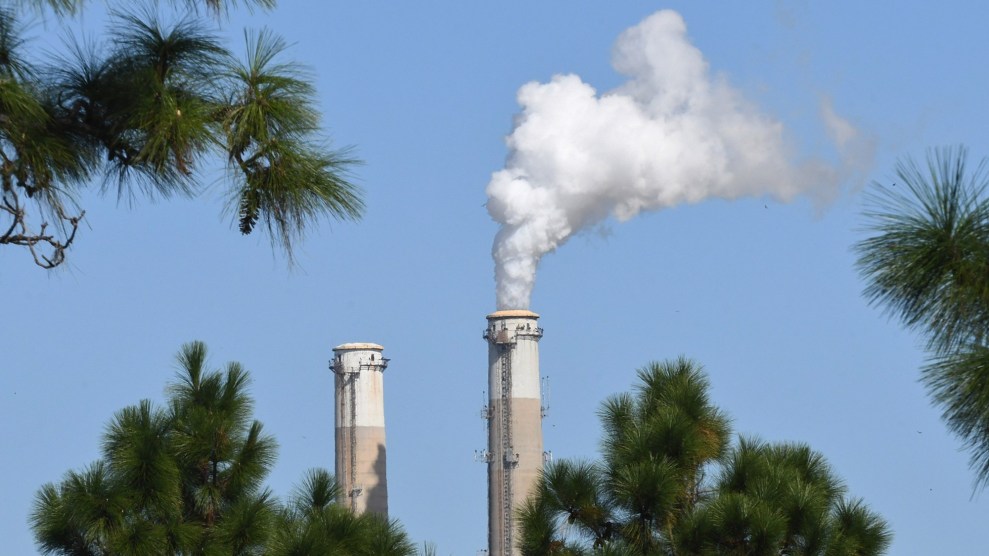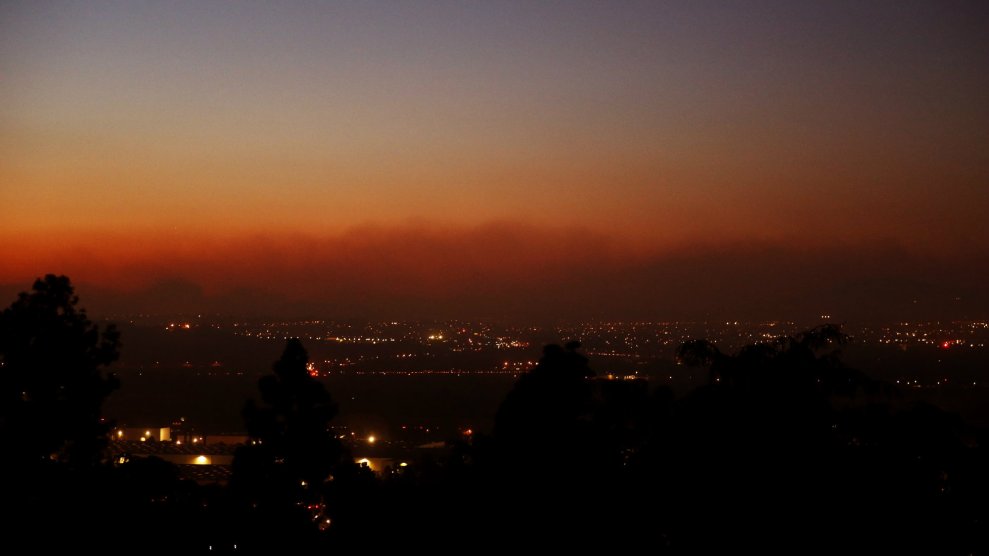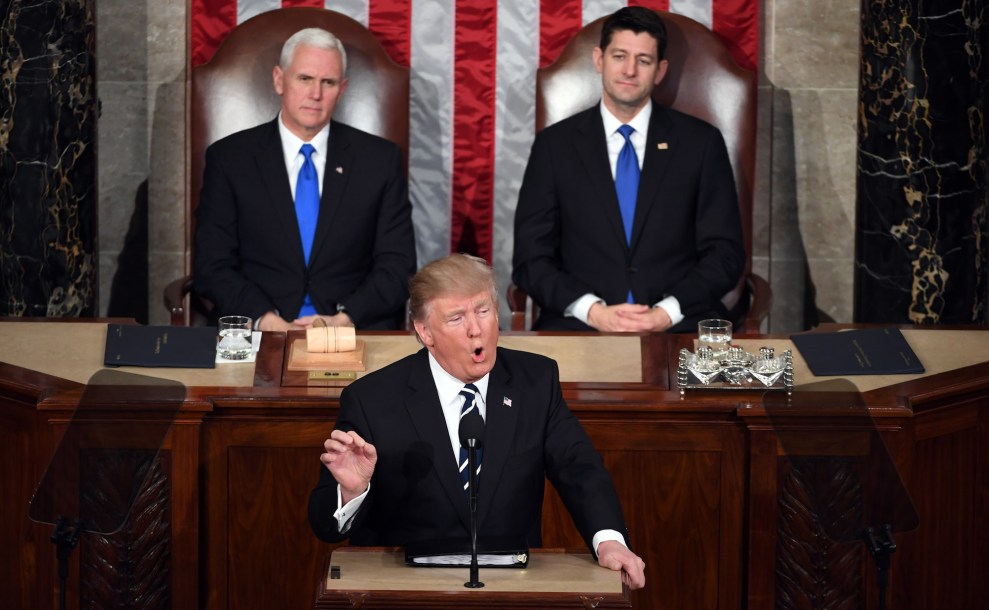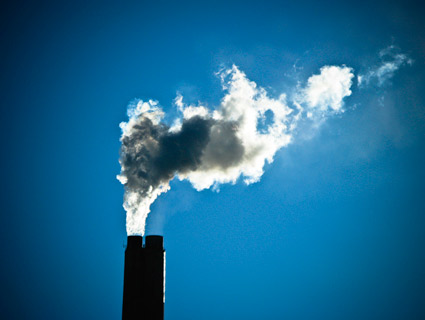
Stanton Energy Center, a coal-fired power plant, in Orlando.Paul Hennessy / ZUMA
This story was originally published by the Guardian and is reproduced here as part of the Climate Desk collaboration.
The Environmental Protection Agency has finalized long-awaited new limits on soot, the tiny air pollution particles emitted by sources as varied as power plants, factories, car exhaust, and wildfires.
“Today’s action is a critical step forward that will better protect workers, families and communities from the dangerous and costly impacts of fine particle pollution,” the EPA administrator, Michael Regan, told reporters on Tuesday.
Also known as fine particle pollution, soot is one of the nation’s most widespread air pollutants. It is also one of the most dangerous, causing an estimated 85,000 to 200,000 excess US deaths annually; the tiny particles can become lodged in human lungs and sometimes even enter the bloodstream, triggering asthma attacks, cancer, and heart and lung disease.
The strengthened pollution controls, unveiled on Wednesday, will lower the annual soot standard to 9 micrograms per cubic meter of air, down from the previous standard of 12 micrograms.
In 2032—the first year that regulators expect compliance with the standard to be required—alone, the new rule will prevent up to 4,500 premature deaths, the agency estimates. It will also result in health benefits valued at $46 billion, including 290,000 lost workdays averted, 800,000 asthma symptoms avoided, and thousands of emergency room visits prevented, the agency says.
“The Biden administration is taking life-saving action to protect people and rein in deadly pollution,” Abigail Dillen, president of the legal and environmental advocacy non-profit Earthjustice, said.
The new rule comes under the Clean Air Act, which sets legal limits for emissions from soot and other major air pollutants. These restrictions are revisited by the US Environmental Protection Agency every five years.
States will now be required to revise their implementation plans under the Clean Air Act to demonstrate how they will achieve compliance with the new control.
Senior EPA officials said that the 9 microgram standard reflects an intensive review of public health literature, the input of an independent science advisory committee, and 700,000 comments on a less-specific draft rule the agency proposed in January 2023.
Experts say the tightened standard will be particularly beneficial for poorer Americans and people of color, who are disproportionately exposed to soot emissions, as well as the elderly, those with pre-existing conditions and children, who are more vulnerable to health impacts from exposure.
Health effects from soot pollution can also have cascading effects, said Doris Browne, former president of the National Medical Association, on an EPA press call on Tuesday. One example: a school bus driver who must miss work when air pollution causes an asthma flare-up.
“That driver missing work impacts the students on the route, the parents trying to get to work themselves, the classroom that need those healthy attentive students, and the learning that does or does not happen,” she said.
When crafting Clean Air Act standards, the EPA is not, by law, supposed to consider the costs to polluting sectors, but that has not stopped those industries from weighing in.
Late last year, representatives from industries including oil and gas, mining and manufacturing sent a letter to the White House saying that a 9 microgram standard would leave “no room” for economic development, bring permitting for many industries to a halt, and threatening job growth.
“Tightening the [soot] standard will grind permits to a halt for a large portion of our country,” said Marty Durbin, senior vice-president for policy at the US Chamber of Commerce, in an emailed statement.
Senior EPA officials on Tuesday told reporters that that concern was vastly overstated, and that averted death and illness would far outweigh potential costs. Every $1 spent on compliance with the new action could result in up to $77 in human health benefits in 2032, the agency said. Additionally, that year, 99 percent of US counties would already probably meet the tightened control based on current trends and pre-existing regulations, agency officials said, limiting the cost of compliance.
“The stronger standard is designed to ensure clear routine pathways for industry to continue to upgrade and build, while maintaining cleaner, healthier air,” said the EPA’s Regan.
Since 2000, concentrations of soot have decreased in the US while the economy has grown, Regan said. But Michael Gerrard, director of the Sabin Center for Climate Change Law at Columbia Law School, said polluting sectors would still probably put up a fight.
“I expect that some industry groups will challenge this in court immediately,” he said.
Gerrard also expects the new rule to be to quickly revoked if Trump is re-elected. His administration would have to go through a notice and comment period to do so, but a mere announcement of a rollback could lead states immediately to halt the “laborious process” of revising their compliance plans, Gerrard said.
The Trump administration declined to tighten soot standards in 2020, despite outcry from EPA scientists, health experts and environmental advocates.
Some environmental justice advocates and scientists have pushed EPA to go further and adjust the US 24-hour soot pollution limit, rather than allowing polluters to ramp up emissions on certain days as long as they comply with the 9 micrograms average over the course of a year. The new rule does not meet that request.
Marshall Burke, associate professor of environmental policy at the Stanford Doerr School of Sustainability, also noted that the new control would not do much to curb soot pollution from one growing source: wildfires, which are not regulated by the Clean Air Act. In fact, he said, because the law does not exempt prescribed burns—which are a “key tool” to avoid wildfire spread—they could reduce the use of that tactic.
Burke suggested regulators require states to create plans to slash wildfire risk. Nonetheless, he praised the rule. “The EPA’s strengthened pollution standards are a triumph of both science and science-based policy,” he said.















